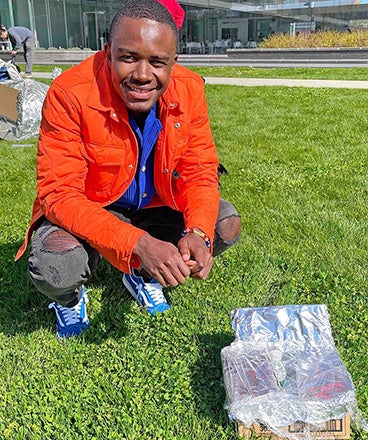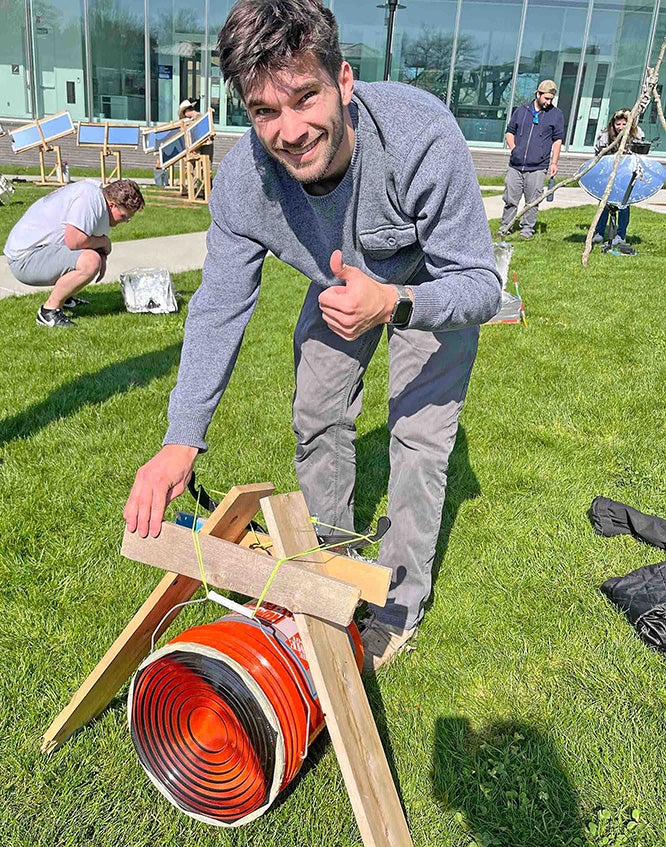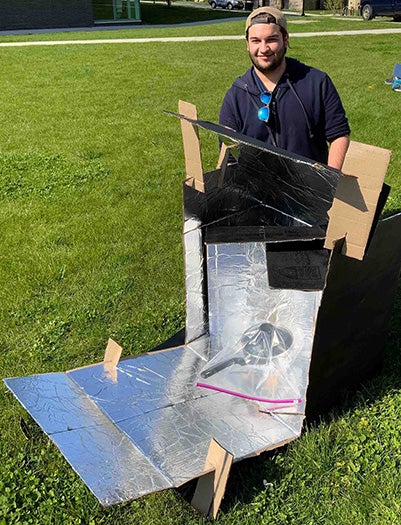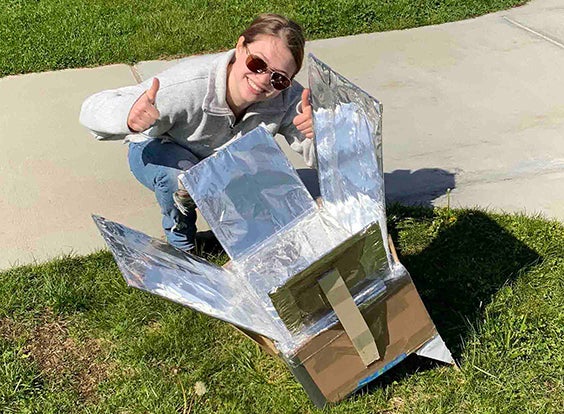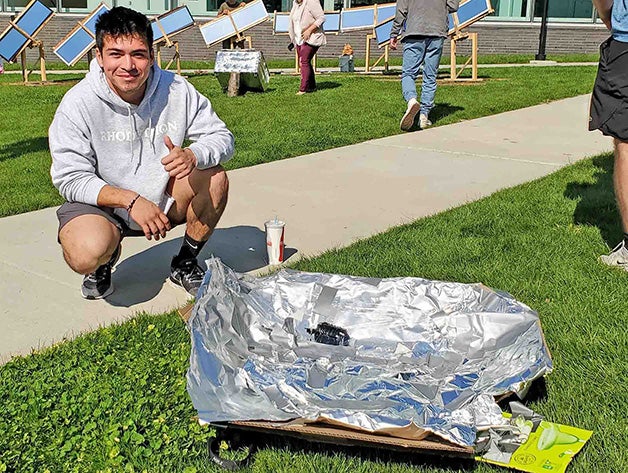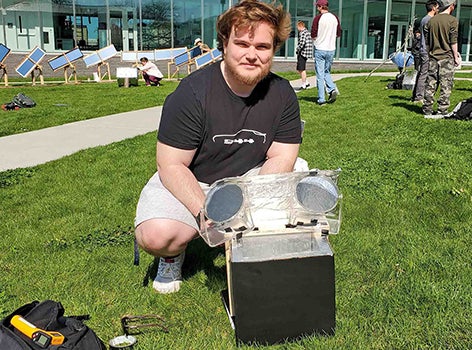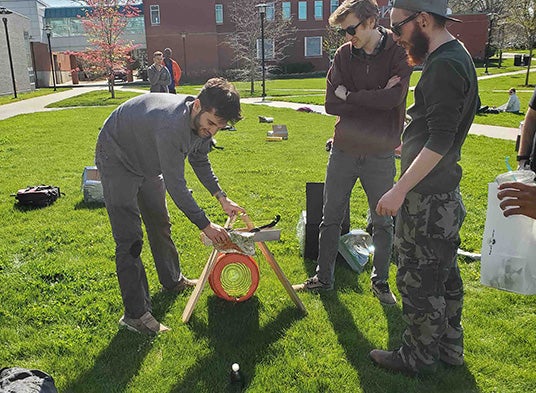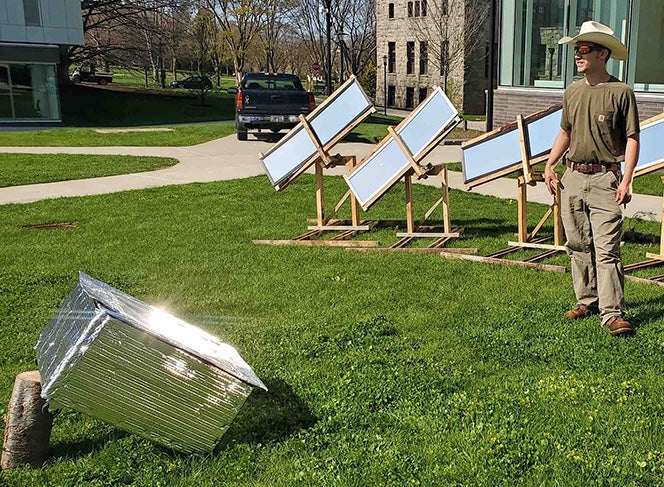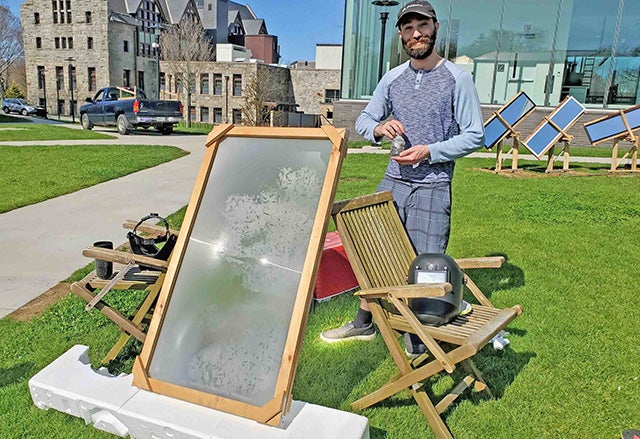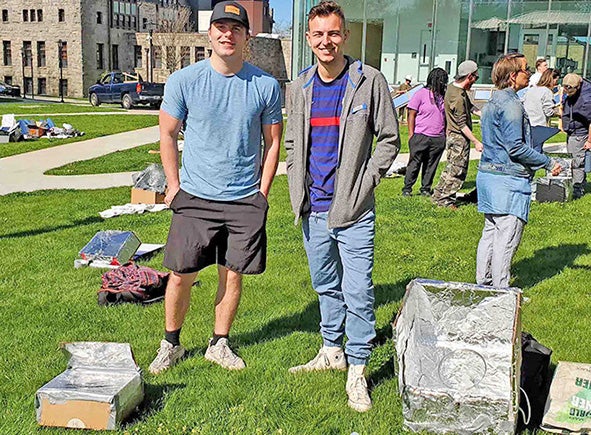By Neil Nachbar
It’s common for students at the University of Rhode Island to catch some rays on the quad toward the end of the school year.
The students in URI’s Solar Energy Systems course, however, weren’t on the quad recently to work on their tans. They were catching rays for academic reasons.
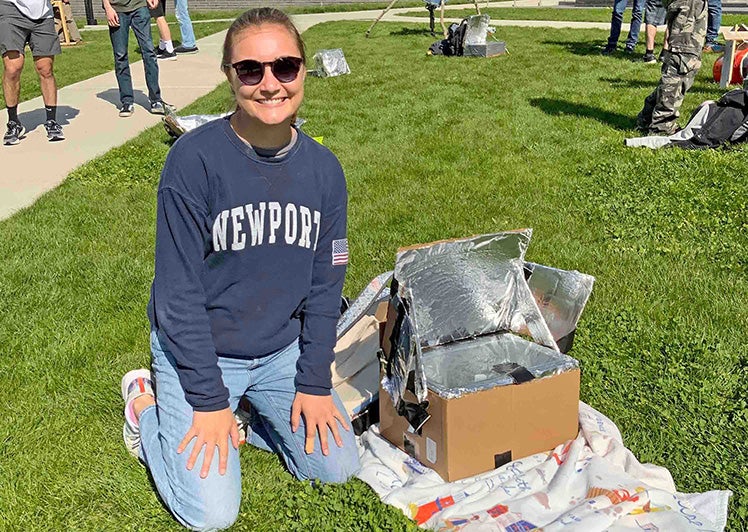
Any of the 25 students who could make an 8-ounce plastic bottle of water explode or melt within two hours, using a solar thermal cooker and the power of the sun, would receive an automatic “A” for the spring semester course.
“The first time I taught this course, the project was simply a heavily weighted homework activity,” said Gretchen Macht, an assistant professor of systems engineering at URI. “I changed it to a high-stakes, high-reward model.”
The plastic bottles were provided by Macht. The design and construction of the solar thermal cookers were left up to the students’ creativity and ingenuity.
The designs ranged from something as small as a shoebox lined with aluminum foil to as elaborate as a concentrated solar system with multiple convex mirrors.
“Some of the creativity was astonishing, using recycled materials like satellite dishes or items around the house and natural materials such as sticks, to fully embracing optics with mirrors and lenses,” said Macht, who is also the director of URI’s Sustainability Innovative Solutions (SIS) Laboratory and the URI Voter OperaTions & Election Systems (URI Votes) program.
The first to accomplish the task was Adam Murphy, a mechanical engineering major. In less than an hour, the water temperature inside his bottle reached 369 degrees.
“My strategy was to condense a beam of light as much as possible,” said Murphy. “As others tried to raise the ambient temperature, I attempted to make the water boil in a very small area. I experimented using a charcoal slurry to capture most of the light on the surface of the bottle to capture and convert all of the light to heat.”
Three other students were able to get the bottle to burst or melt: Zachary deWardener, Cam Amaral and Todd Poulos.
Murphy, who is from South Kingstown, earned his bachelor’s degree in mechanical engineering in May.
“This course was a beautiful blend of math, engineering, and real-world problem solving,” said Murphy. “Dr. Macht makes the class fun, while diving into every aspect of solar energy.”
The course attracted students from most of the engineering programs at URI and a couple of students from non-engineering programs.
“The class was incredibly interesting and very unique in that Dr. Macht provided global and local perspectives on solar and other renewable energies,” said Kaitlin Neville, a graduate student from Garden City, N.Y. who is studying systems engineering. “Guest speakers from the solar industry spoke with the class and there were hands-on components that allowed students a glimpse of what working in the solar industry might entail, including the solar competition as the final project.”
Helping Macht continuously measure the water temperatures were undergraduate research assistant Kassia Almeida and administrative assistant Amber Fearn.
“I think the course and the course final went smashingly well,” said Macht. “I would consider adding a few parameters next year, such as limiting the size of the mirrors and/or lenses that can be used.”

